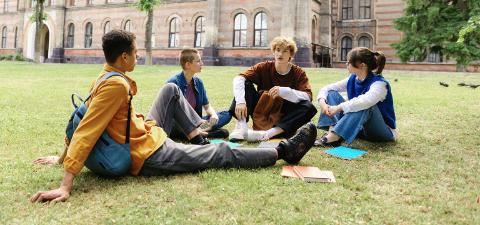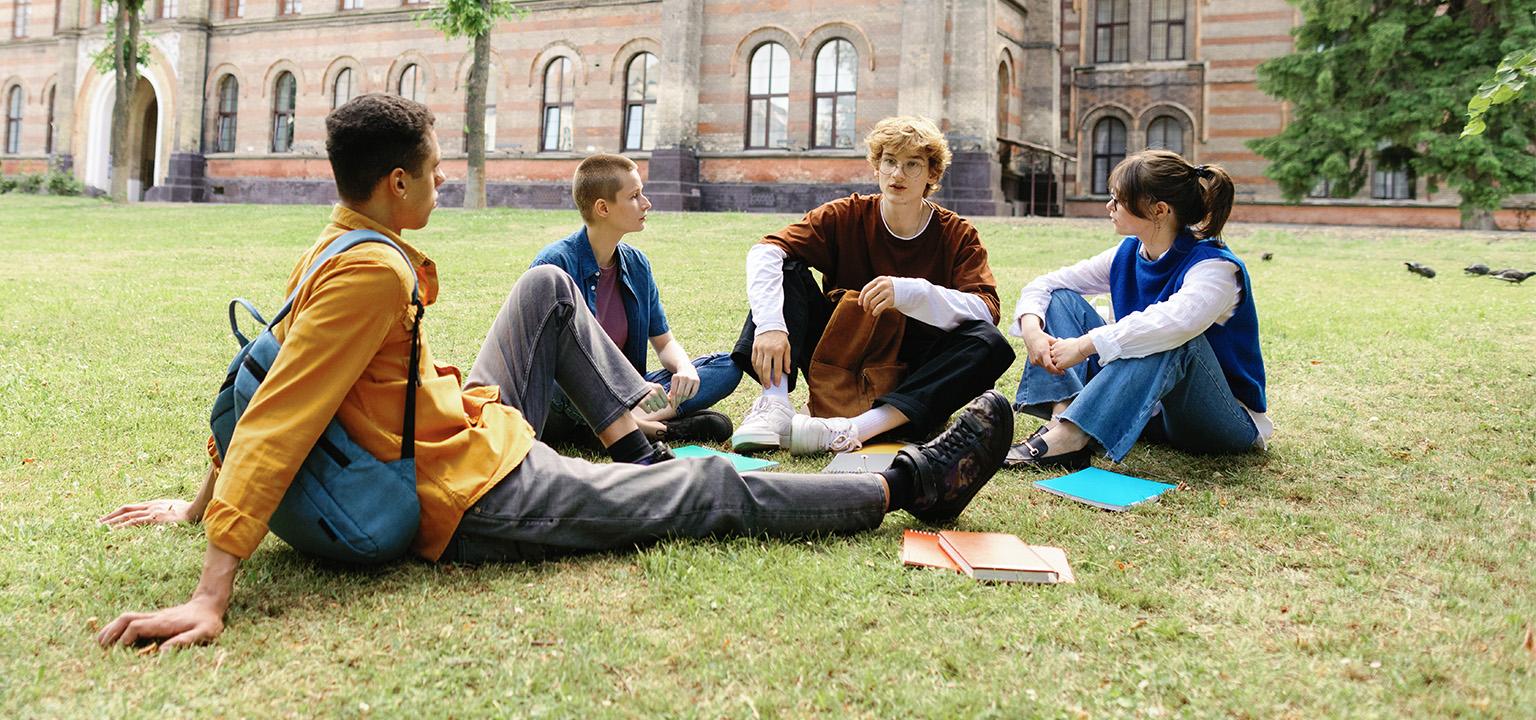Pocket money at secondary school age: five tips
If your schoolchild wants to make their own decisions and go out with friends, it’s time to start taking pocket money more seriously, not just as a nice treat, but as a tool for learning. By creating a real budget, your teenager will learn to plan, make choices and save. That’s where having a personal account and a smart banking app comes in handy!
1. Pocket money: cash or digital?
Young children learn the value of money more easily with coins and banknotes, but once they turn 11 or 12, a lot starts to change. Your child attends to a new school, gets more freedom, and is more likely to encounter situations where money is needed, such as buying a drink after school, a present for a friend, or a cinema ticket at the weekend. It’s at this point that many parents make the switch from cash to digital pocket money – more than half of all young people start secondary school with their own account2, and the rest soon follow.
With their own debit card and banking app, your secondary school student will learn to keep an eye on their spending, and you won't have to constantly withdraw money or lend them your debit card any more.
Six benefits of digital pocket money
Safer than easily-lost cash
Your child always has a way to make payments without needing to ask you
An increasing number of retailers only allow you to pay digitally, which can be awkward if your child only has cash on them
Your child can easily keep track of their balance, income and expenditure and as a parent, you can also keep an eye on things until your child becomes a legal adult
Set up a standing order to transfer pocket money (one less thing to do !)
An ideal way for teaching your child to save for bigger expenses
If you don’t want your child to withdraw or spend too much pocket money,
you can easily set limits with the ‘Parental supervision’ dashboard in KBC Brussels Mobile or Touch.
2. How much pocket money should you give?
There’s no set amount that works for everyone – it all depends on your budget and what your child should use their pocket money for. Do they only need to pay for snacks and trips into town, or do they expect to pay for presents, clothes and their mobile phone subscription as well? If they buy their own clothing, does that include shoes and jackets?
In any case, we recommend gradually giving your teen more responsibility, so that they learn to budget for boring expenses as well as the fun things – just as a financially responsible adult should.
Monthly target amounts for teenagers (2025)
| Year 1-2 of secondary |
15-50 euros |
Start small (e.g., snack money) and increase little by little (e.g., outings) |
|---|---|---|
| Year 3-4 of secondary |
25-75 euros |
Allow more freedom (e.g., enable online shopping from the ‘Parental supervision’ dashboard) |
| Year 5-6 of secondary |
75-150 euros |
Consider giving pocket money for clothes or subscriptions as well |
These amounts are based on updated figures, accounting for indexation (+30% compared to previous studies), and are for guidance only. The more responsibility you give your teen, the more pocket money they will need to pay for everything.
3. When do you give pocket money?
Choose a set schedule: weekly or monthly. From secondary school onwards, monthly pocket money is the most common approach – especially if this is transferred to a current account by standing order (making life easier for you!). This teaches your child to plan and think ahead, rather than always looking forward to a weekly handout.
If they run out of pocket money, don't start giving money in advance. It may be a bitter pill to swallow, but your child will soon learn to take a more considered approach to their future spending.
4. Bonus: teach your teenager to save
Pocket money isn’t just for spending, it’s also a chance to learn how to save up for bigger expenses. If your child agrees for part of their pocket money to be deposited automatically into a savings account in their name, they will learn to set goals and appreciate delayed gratification. A great habit for later in life!
- Tip: Saving for your dreams is a fun and effective tool in KBC Brussels Mobile that helps your teenager achieve their savings goals step by step.
5. In conclusion: stay involved, but extend trust
Let your child make mistakes and learn from them. But keep the conversation going: what is your child spending money on and what are they saving up for? Are there any (hard) lessons they’ve learned in the meantime? This is how you work together to establish financial responsibility and self-confidence.
Ready for digital pocket money?
A young person’s account is free of charge between the ages of 10 and 24 and easy to open. With their own debit card and the best banking app in the world3, your secondary school student has all the tools they need to become financially independent.
1 What level of financial education comes at what age | Wikifin
2 11-year-olds are applying for twice as many bank cards before starting secondary school | Spaargids
3 Independent research company Sia named KBC Brussels Mobile Best Banking App in Belgium and third-best in the world.


